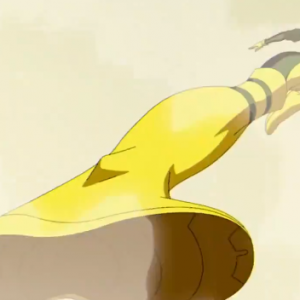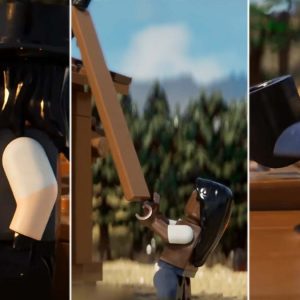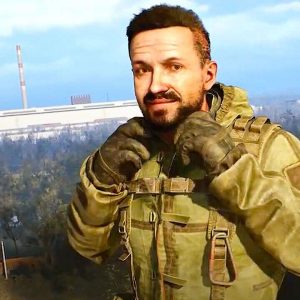As with a lot of sequels, Oxenfree 2: Lost Signals sticks with what works. The first Oxenfree became an instant favorite because it’s a horror game about being on the edge, both literally and metaphorically. It centers on teens on the cusp of adulthood battling terrifying ghosts trapped on the boundary of reality between space and time. Those were two edges that worked extremely well together, especially with time-travel elements that make possible futures and outcomes feel more real. In some ways, Lost Signals feels familiar to the point of being somewhat repetitive, but it still goes just a bit further. You have a similar array of secrets to uncover, dialogue to engage in, and choices to make that can drastically impact the ending and the relationships you might build. The watercolor-inspired art style does a lot to make it feel like a dream, and the audio design continues to be hard-hitting. It doesn’t outdo the impact of the original, nor is it as scary, but it still finds its own way thanks to some subtle but impactful changes that come together for an emotional and surprising ride rather than a lackluster rehash.
It’s eye-opening how characters’ experiences can change so drastically just by aging them up to adults. Instead of basing a second story around teenagers, the developers at Night School created Riley and Jacob, two 30-somethings who have to figure out how to move forward into the next stage of life while battling those same stranded ghosts (and also some rebellious teens). Between that reoccurring idea, a lot of the gameplay carrying over, and the fact that Lost Signals takes place in a town that neighbors the original setting, it doesn’t take any large swings. But that doesn’t stop the core story from being any more impactful.
Riley and Jacob are working overnight for an environmental research group that wants to place transmitters across Camena, the coastal town where they grew up that, coincidentally, is near Edwards Island, the old military and tourist location where the first game takes place. People who played the first game already know that there’s nothing good over there, and thankfully, Lost Signals doesn’t devote too much time to re-explaining it. There are recaps, but they’re spread out over the course of the first act to get you caught up or remind you if you’ve forgotten the details since Oxenfree came out in 2016, and it’s just enough to get the characters up to speed, too.
The duo quickly comes up against the antagonists — if they can be called that: a group of teens from a mysterious religious group who are trying to reopen the portals from the first game and unleash whatever’s beyond them. Their leader is a boisterous girl named Olivia, who has readily apparent motives, and it’s frustrating at first because Riley and Jacob take way too long to realize what’s happening, but thankfully, the developers have a few tricks. What is really going on with Olivia and her friends is the big reveal, not why they’re doing it in the first place. I’m still not sure how I feel about this revelation, which simultaneously works with and against the events of the first game, but it’s enough to really change things up before the final act.
Riley and Jacob are, understandably, out of their depth, and not just in regard to the ghosts. They are your typical aimless millennials with generational baggage. Riley, who is our point-of-view character, is clearly holding back a lot of intense emotions when we meet her for the first time sleeping at a quiet bus stop. She pairs neatly with Jacob, a meek but generally optimistic guy who can best be described as an airhead. A lot of the story hinges on the conversations these two have as they hike around Camena’s winding trails, and just like in the first game, you can satisfyingly control the vibes and direction of those talks. You can choose to be emotionally distant or open with Jacob; engage with his weird tangents or cut him off. They’re different takes on Riley as a character, but they all still manage to feel like things Riley would do or say, and that’s even before you learn about why she is the way she is.
The same range of conversation options goes for the teens as well, who you can befriend and get on your side if you play your cards right. And their interactions are largely interesting because Riley is someone who hasn’t done the best job taking care of herself, so there’s little chance she can change the lives of some aimless kids with a few pep talks. All of this creates a dynamic that sometimes feels like it’s adults vs. teens, which can become grating during times when it’s not handled fairly or realistically. For example, while Olivia’s motivations are understandable, she came off as one-dimensional during my playthrough because she seemed to have absolutely no redeeming characteristics that would explain why people choose to follow her or support her. But I’m left wondering about her because I didn’t do a lot to make her feel heard, so maybe that could be altered in a different playthrough.
However, it was obvious who I was going to relate to the most from the start. I’m around the same age as Riley and Jacob, and watching them (sometimes literally) face their baggage and potential futures hit a little too close to home. Like them – and a whole lot of other people in this part of their lives – I’m also sitting on a bit of a precipice between a present that’s not emotionally fulfilling and a potential future that I could work toward. And as somebody who also had some rough teen years, I definitely projected quite a bit on these characters.
Riley is an especially relatable figure. She’s clearly closed off and always on the edge of a nervous breakdown, but it isn’t her entire personality. If you allow her, she can reveal a lot of dimension, especially as Lost Signals opens up to reveal what she’ll be experiencing in the years ahead. Just like in the first game, introducing time travel into a personal story is a great way to have characters literally face their future and have them reckon with it, and it still works well here as a way to understand what everybody is dealing with.
Naturally that’s all based on personal experience; your mileage will vary with how much you relate to the characters, but their conversations feel real enough that I think most people who would consider picking up a game like Oxenfree in the first place will find something relatable. I particularly enjoyed one section where Jacob leads Riley through one-word story time (where you create a story one word at a time) as a way to distract himself from a particularly traumatic portal event. You can brush him off, but this is just one of the many moments of downtime that allow the characters to really show off who they are. The voice acting is exceptional across the board, but Elizabeth Saydah and Joe Bianco (Riley and Jacob, respectively), also imbue their characters with a lot of personality, which certainly helps with making them seem like actual people. They’re subdued, with the proper amount of “ums” and pauses to make their conversations feel real.
Just like in the last one, the crux of Lost Signals is these conversations, where you can respond in one of three ways. I don’t know how many different combinations there are in Lost Signals or how many endings they amount to (there are three major ones I can spot, but it’s possible there are dozens of variations). But there are so many ways to take interactions, which you use to build relationships, which in turn have a big impact on much larger events. If you don’t forge bonds with Olivia’s followers, for example, it can lead to negative consequences when confronting her. Although depending on what kind of Riley you want to play, you might want to keep them at a distance – choices aren’t “good” or “bad,” in the traditional video game sense, so you aren’t compelled to do either except if you want to do multiple playthroughs. One where I sought out secrets and did sidequests took around eight hours, but subsequent runs will likely be shorter. And depending on your ending, you might want to immediately jump into another. After my extremely bittersweet ending, I definitely will be.
Beyond a whole new set of characters, the developers made other changes to Oxenfree’s template, including a larger setting. This brings more places to explore, but it also creates more empty space that you have to fill. There are quite a few places where you’ll be walking through them and nothing will happen, or you have to backtrack over trails you’ve been across a few times already with nothing new to refresh them. But thankfully, there’s enough that happens throughout the runtime that these moments don’t bog you down too much.
The developers do manage to fill Lost Signals out with some new and clever ideas, the biggest being the walkie-talkie. In the first game there was only the radio, but here, there are nine channels where you can talk with other characters. Most of them are optional, but if you choose, you can reach out to a park ranger on channel 1, a fisherman on channel 5, and a high schooler running an advice radio show on channel 8 (make sure to check in on her when you get the chance). It also provides another outlet for some strange transmissions that deepen the weirdness, which is always welcome. These are all characters that feel properly fleshed out, which is impressive considering you never see any of them.
Around Camena you can also find letters from Maggie Adler, a tertiary character from the last game, and complete tasks for some of your walkie-talkie friends. Most of them don’t have a huge impact on the story, but they give you more chances to engage in decision-making, and they explain what’s happening in the wider world as the portals start to wreak more havoc. The same goes for the main story quest as well. You have to visit a few different peaks to plant the transmitters, and you can technically do them in any order. This means you’ll hit certain encounters out of what must’ve been the expected order, which in my playthrough meant a location was ransacked before I got there. It gives way more weight to your choices when even the smallest ones have immediate effects.
Hiking around the island also isn’t too easy, which also helps to break up the monotony when quests send you back and forth. Camena is more mountainous than Edwards Island, so there’s a new mountain climbing mechanic. This cuts off specific areas until you get certain equipment (in classic adventure game style), which makes completing the task of placing transmitters at the highest peaks more difficult. It doesn’t do a ton to change it up, but it’s enough to make Camena feel distinct from Edwards Island, and it does more to fill in the emptiness of the map. It also gives Lost Signals reason to open up new areas like caves and beaches that are off the beaten path and contain secrets and important storylines.
If an area is particularly inaccessible, there’s a chance you might get to take advantage of some portals through time. These dump you out in the past and allow you to cross a bridge that might not be there anymore or use a lift that’s since collapsed. However, this isn’t used nearly enough considering how much much time the developers dedicate to teaching you how they work. These barely tapped puzzle ideas are a missed opportunity to add more to Lost Signals and separate it from its predecessor just a bit more.








the1.21updateofficialnameis..._minecraftmonthly-youtube-googlechrome4_26_20242_39_36pm-300x300.png)














